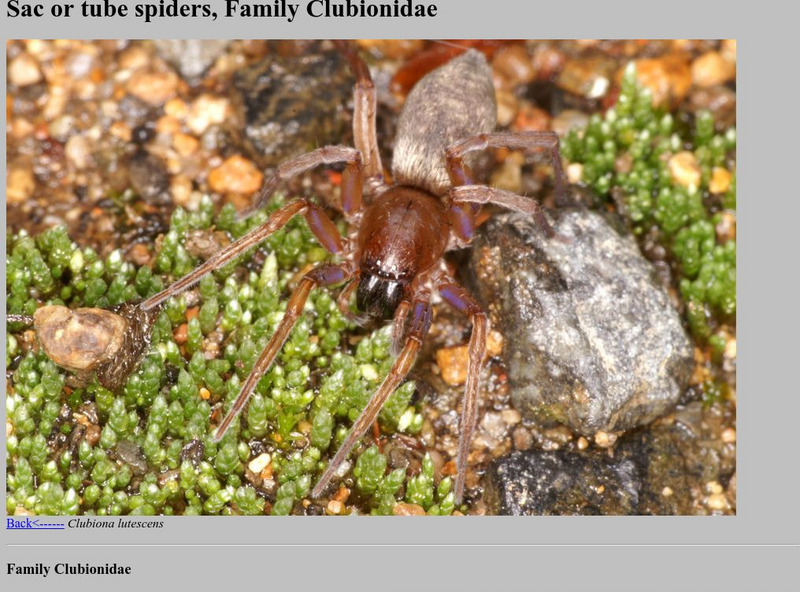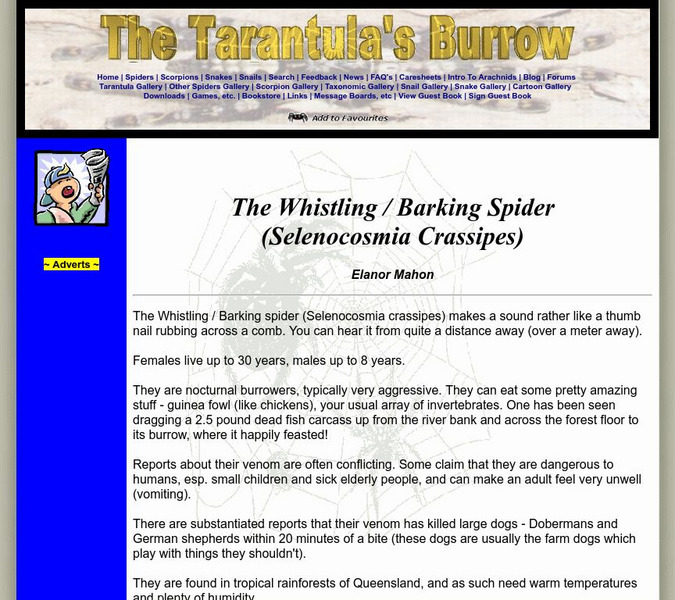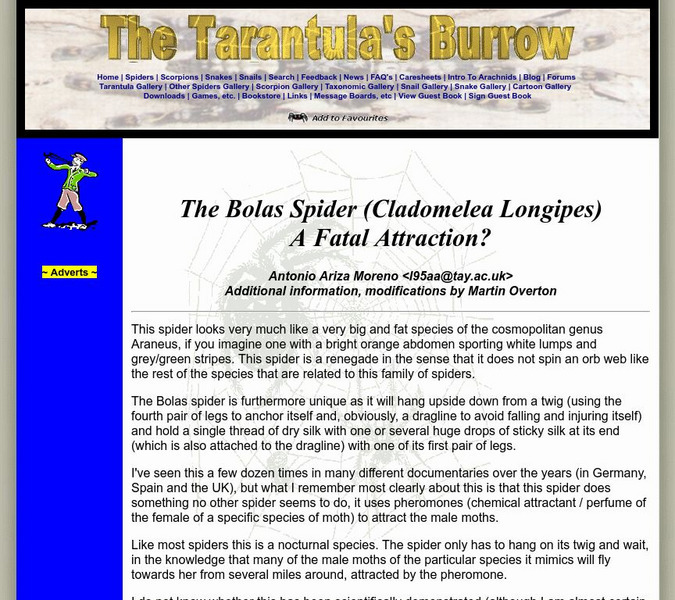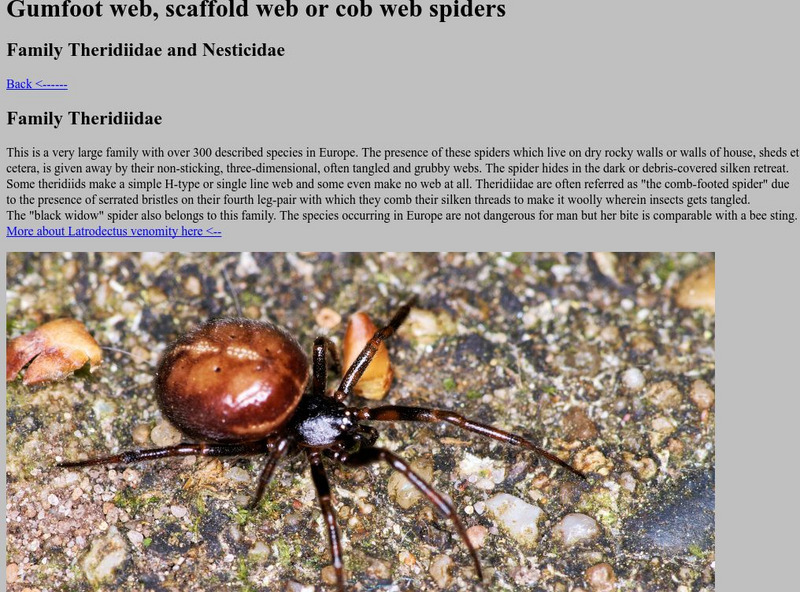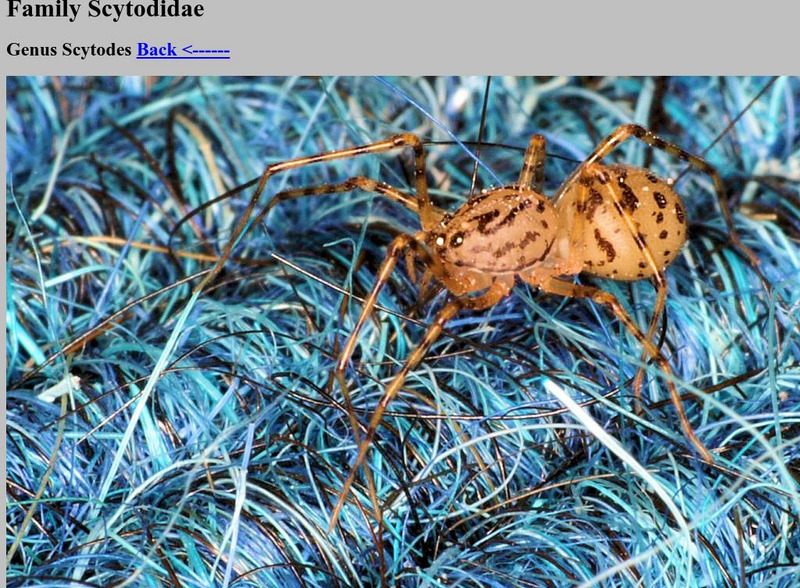Hi, what do you want to do?
Other
Sac Spiders
A resource with information on the spider family Gnaphosidae, otherwise known as the sac spiders. Includes pictures.
Other
Crab Spiders: Family Thomisidae
This resource contains information on the Thomisidae family and offers plenty of pictures. Includes a section on the mating habits of the Genus Xysticus.
Akron Children's Hospital
Akron Children's Hospital: Kidshealth: Hey! A Brown Recluse Spider Bit Me!
The brown recluse spider is one of six poisonous kinds of spiders in the United States. Read this article for kids to learn more about this venomous spider.
Akron Children's Hospital
Akron Children's Hospital: Kidshealth: Hey! A Black Widow Spider Bit Me!
Read this article to learn about the black widow spider, one of six poisonous kinds of spiders in the United States.
Other
Tb: Spiders Considered as Medically Important
This article investigates how humans vary in their vulnerability to venomous spiders and the importance of certain spiders to medical research. It investigates what factors contribute to this difference.
Other
The Tarantula's Burrow: The Whistling / Barking Spider
A quick overview on the whistling spider which is found predominantly in Australia. Includes reports on their ability to make noise and the effects of their bites.
Other
Arachnaphiliac: The Bola Spider a Fatal Attraction?
A site on the unique bola spider, which uses pheromones in order to catch its prey, male moths.
PBS
Pbs Teachers: Scientific American: Spiders! Spider Canyon
Investigate funnel-web spiders and their ability to adapt in order to survive. Make a set of spider trading cards that will include information about a spider's behavior, habitat and adaptations.
PBS
Pbs Teachers: Scientific American: Spiders! Spin, Spin, Spin
Investigate the use of computers to simulate spider behaviors to learn more about how and why spiders build webs. Build a model of a web to compare your eyesight and dexterity to a spider's, then compare the elasticity and strength of...
PBS
Pbs Teachers: Scientific American: Spiders! Song and Dance
Explore the diversity and prevalence of spiders around the world, and learn about jumping spiders, hunters that stalk their prey and pounce from a distance. Research the types and population density of spiders that live around you.
PBS
Pbs Teachers: Scientific American: Spiders! Amazon Tales
Explore several spider species and learn about their adaptations to the world around them. Design a new species of spider, with adaptations required to survive in a particular habitat.
PBS
Pbs Teachers: Scientific American: Spider Web Making Stratagems
Investigate spiders in Panama that use UV-reflecting silk in their webs to attract their prey. Build a device that traps flying insects, experimenting with different light sources to choose the best lure.
Burke Museum
Burke Museum: Arachnology
Arachnology, or the study of spiders and other Arachnida, is discussed here in the research and collection section of the Burke Museum. Other topics discussed include spider myths, research, and people.
Other
Araneae, Spiders of North West Europe: The Black Widow
This site contains information on the black widow's family. Includes information and pictures on the entire family, not just the black widow.
Other
Araneae, Spiders of Europe: Family Amaurobiidae
Multiple colorful pictures bring this web site to life. Contains information on the mating and preying habits of the amaurobiidae, otherwise known as the tunnel weavers.
Ducksters
Ducksters: Black Widow Spider for Kids
Kids learn about the abitat of the Black Widow Spider, most poisonous spider in North America. Arachnid with red hour glass.
Curated OER
Kids Health: Hey! A Black Widow Spider Bit Me
This site is provided for by KidsHealth. Black widow spiders are poisonous spiders. Use this site to find out how to identify them, where they live, and what to do if you are bitten by one.
HotChalk
Hot Chalk: Lesson Plans Page: Spooky Spiders
This simple lesson plan is designed to introduce young students to the characteristics of a spider and to classify whether a spider is an insect or an arachnid by analyzing its characteristics.
PBS
Pbs Teachers: Scientific American: Calls of the Wild: Spider Sounds
Explore the communication rituals of insects and other arachnids by constructing a device capable of detecting minuscule impacts of cricket feet.
Australian Museum
Australian Museum: Arachnology Collection
Australian Museum Online has a collection of arachnids. You can even examine their "feature arachnid!"
Sheppard Software
Sheppard Software: Daddy Long Legs
Find out the difference between harvestmen and spiders in the arachnid family. Read about the diet, characteristics, and status as an endangered species.
Akron Children's Hospital
Akron Children's Hospital: Kidshealth: Hey! A Tarantula Bit Me!
A tarantula is a black, hairy spider that is about two to three inches long. Learn all about spiders and tarantulas in this article for kids.
Other
Family Scytodidae
A web site on the family of scytodidae. Includes information about qualities specific to this family of spiders. Contains multiple pictures and a diagram.





